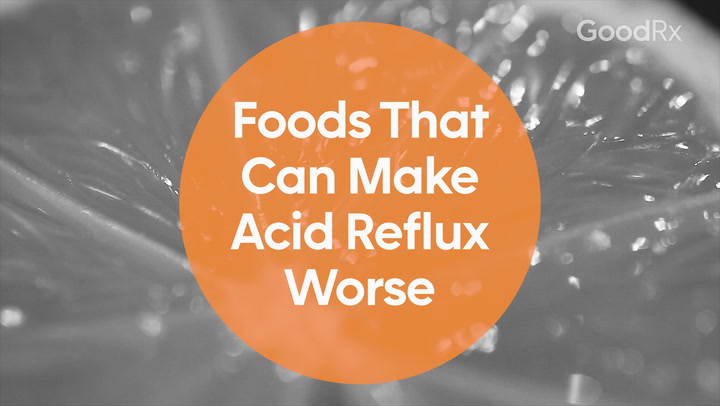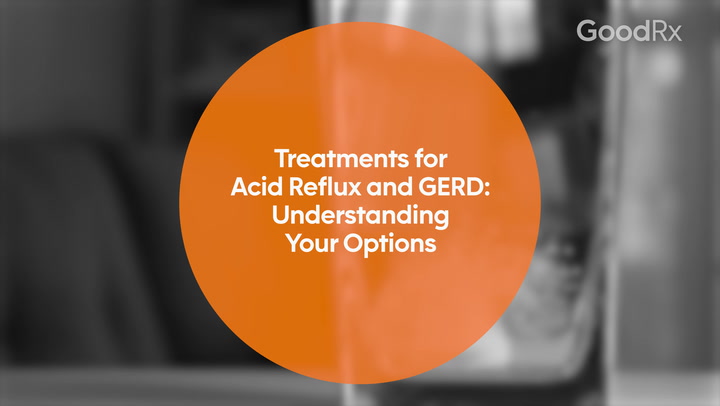
Famotidine, Cimetidine, and More: A List of H2 Blockers (Plus, Why You Can’t Find Ranitidine)
Key takeaways:
H2 blockers (histamine-2 receptor antagonists) are medications commonly used to treat acid reflux and heartburn. You can find some H2 blockers over the counter (OTC), while others are prescription-only.
Famotidine (Pepcid AC, Zantac 360), cimetidine (Tagamet HB), and nizatidine are three H2 blockers currently on the market. Certain doses of famotidine and cimetidine are available OTC.
Ranitidine (formerly known as Zantac) was an OTC H2 blocker that was removed from the market in 2020. This was due to the presence of contaminants found in some ranitidine products.
Access savings on related medications
Table of contents

H2 blockers (histamine-2 receptor antagonists) are a class of medications that help lower stomach acid levels. These medications are commonly used to relieve heartburn and other acid reflux symptoms. But they can also treat some digestive conditions, such as gastroesophageal reflux disease (GERD).
H2 blockers are readily accessible, with many forms available over the counter (OTC). Others are available only with a prescription. H2 blockers start working quickly. This makes them a convenient option for fast relief. But what H2 blockers are available?
What are H2 blockers?
H2 blockers are a type of antihistamine. But they work differently from the antihistamines used for allergies, such as cetirizine (Zyrtec).
H2 blockers work by blocking histamine in the stomach lining. This lowers acid levels in the stomach and helps relieve symptoms of acid-related conditions. H2 blockers can also promote healing of the stomach lining.
H2 blockers are available both OTC and by prescription. Below, we list three available H2 blockers and what sets them apart.
1. Famotidine (Pepcid AC)
Famotidine is the most popular H2 blocker on the market. It’s available in both OTC and prescription doses.
Get a head start on heartburn. Discover the top over-the-counter medications for heartburn.
Tips for success. Find out the best time to take famotidine (Pepcid AC), plus other tips to get the most out of your medication.
All about cimetidine. Pharmacists answer frequently asked questions about cimetidine (Tagamet HB).
Famotidine is available OTC as a brand-name and generic medication as 10 mg and 20 mg tablets. Examples of OTC famotidine products include:
Famotidine is available with a prescription as a 20 mg or 40 mg tablet, an oral liquid, and an injectable liquid. The prescription versions are only available as generic medications.
Most people take famotidine once or twice a day. And many experience no side effects while taking it. It also interacts with few medications.
How to save on famotidine
There are ways to save on famotidine, which is available as both a brand-name and generic medication. If a healthcare professional writes you a prescription for OTC famotidine, GoodRx can help you save over 75% off the average retail price.
The price of generic OTC famotidine at certain pharmacies is as low as $9.20 with a free GoodRx discount. And the price of generic prescription famotidine at certain pharmacies may be as low as $11.40 with a free GoodRx discount.
2. Cimetidine (Tagamet HB)
Cimetidine was the first H2 blocker developed and remains available both OTC and by prescription.
OTC cimetidine comes as a 200 mg tablet. It’s available as both brand-name and generic medications. Common examples of OTC cimetidine products include:
Higher cimetidine doses (300 mg, 400 mg, and 800 mg) and an oral liquid version are available prescription-only. These are available only as generic medications.
Depending on why you’re taking cimetidine, you may take doses between 1 and 4 times a day. While effective, cimetidine is less popular than famotidine. This is likely because cimetidine has more drug interactions.
And while most people can take cimetidine without side effects, it has a rare risk of male breast growth (gynecomastia). Other H2 blockers aren’t known to cause this side effect.
How to save on cimetidine
There are ways to save on cimetidine, which is available as both a brand-name and generic medication. If a healthcare professional writes you a prescription for OTC cimetidine, GoodRx can help you save over 50% off the average retail price.
The price of generic OTC cimetidine at certain pharmacies is as low as $11.60 with a free GoodRx discount. And the price of generic prescription cimetidine at certain pharmacies may be as low as $30.13 with a free GoodRx discount.
3. Nizatidine
Nizatidine is another H2 blocker currently available. Unlike the two listed above, nizatidine is only available with a prescription. It used to be sold under the brand name Axid. Currently, only generic nizatidine is available.
Nizatidine comes as 150 mg and 300 mg capsules. People usually take it once or twice a day. Similar to above, many people can take nizatidine with mild side effects. And it doesn’t interact with many medications.
How to save on nizatidine
GoodRx can help you save on nizatidine, which is available as a generic medication. The price of nizatidine at certain pharmacies is as low as $24.73 with a free GoodRx discount.
Is there a best H2 blocker?
It’s not clear if there is a “best” H2 blocker. Research comparing H2 blockers is limited. And experts don’t recommend one over the others.
Choosing the right H2 blocker for you typically depends on your personal needs. A healthcare professional can suggest the best H2 blocker for you.
Here are some things to consider when selecting an H2 blocker:
Access: Famotidine and cimetidine are available OTC. Nizatidine is prescription-only. It may be easier to get started with a medication that’s available OTC.
Age: OTC H2 blockers are only approved for people ages 12 and older. If your child is under age 12, they shouldn’t take OTC famotidine or cimetidine without a pediatrician’s OK.
Cost: It may be more cost-effective to have your healthcare team prescribe an H2 blocker for you. This depends on your insurance coverage. You can also check GoodRx to help you shop around for the best price for OTC and prescription H2 blockers.
Dosage form: OTC H2 blockers only come as oral tablets. If you have trouble swallowing pills, contact your healthcare professional. There are oral liquid versions of famotidine and cimetidine available with a prescription.
Interactions: Cimetidine interacts with more medications than famotidine or nizatidine. Share a medication list with your healthcare team. They can make sure the H2 blocker you’re considering is safe to take with your other medications.
Why was ranitidine taken off the market?
Ranitidine was one of the most widely used H2 blockers. It was formerly sold both OTC and with a prescription under the brand name Zantac.
In April 2020, the FDA recalled all prescription and OTC versions of ranitidine. Certain ranitidine products contained N-nitrosodimethylamine (NDMA). Small amounts of NDMA occur naturally and don’t pose a health risk. But large amounts may raise the risk of certain cancers.
In 2019, researchers found that ranitidine had high NDMA levels. This discovery led to a widespread recall and market withdrawal of ranitidine products.
In 2021, a new Zantac product became available OTC, under the name Zantac 360. But this product isn’t the same as the original. Zantac 360 contains famotidine (not ranitidine).
After NDMA was found in ranitidine products, the FDA mandated that other H2 blockers be tested. Nizatidine oral liquid (not the capsules) was also found to have high NDMA levels. In response, nizatidine liquid was recalled and discontinued. No famotidine or cimetidine products were found to contain high amounts of NDMA.
What are some H2 blocker alternatives?
In some cases, you may need an alternative to H2 blockers. For example, H2 blockers may not work as well for you after you’ve been using them for a while. This is because your stomach adapts to the medication’s effects, causing them to be less effective.
Below are some alternative medications to consider if an H2 blocker isn’t right for you.
Antacids
Antacids, such as Tums (calcium carbonate), provide quick relief for occasional heartburn. They work by neutralizing stomach acid. While antacids can work well for treating symptoms, they don’t prevent them. And they aren’t typically recommended long term.
Antacids are available OTC. But there are some precautions to keep in mind with them. They interact with many other medications. They can also cause side effects such as diarrhea or constipation. And in some cases, they may lead to kidney stones.
If you need an antacid for longer than 14 days (2 weeks) in a row, talk to a healthcare professional.
Proton pump inhibitors (PPIs)
Proton pump inhibitors (PPIs), such as omeprazole (Prilosec), are popular H2 blocker alternatives. They’re often used for severe GERD, stomach ulcers, and other chronic acid-related conditions.
PPIs are more effective than H2 blockers, but they take a few days to start working. Your healthcare team may recommend a PPI if antacids or H2 blockers don’t work well enough for you.
Many PPIs are available OTC. But for most people, it’s best to only take them for short periods of time. PPIs have risks for serious, long-term side effects, such as weakened bones.
If you need to take a PPI for longer than 2 weeks, talk to a healthcare professional. They may suggest a prescription-strength PPI, as higher dosages are available with a prescription. And they can help watch for signs of more serious side effects.
The bottom line
H2 blockers (histamine-2 receptor antagonists) are a common option for managing heartburn. Famotidine (Pepcid AC) and cimetidine (Tagamet HB) are examples of over-the-counter (OTC) H2 blockers. Nizatidine is another medication in this class, but it’s prescription-only.
Ranitidine (Zantac) was an OTC H2 blocker. It was recalled due to the presence of unsafe impurities. It’s no longer available on the U.S. market.
Ask a healthcare professional if an H2 blocker might be right for you.
Why trust our experts?



References
Alembic Pharmaceuticals. (2024). Famotidine tablet [package insert]. DailyMed.
Amazon.com Services. (2022). Basic Care Acid Reducer- cimetidine tablet, film coated [package insert]. DailyMed.
American College of Gastroenterology. (n.d.). Acid reflux / GERD (gastroesophageal reflux disease).
Big Lots Stores. (2025). Sound Body Acid Reducer- famotidine tablet, film coated [package insert]. DailyMed.
Chattem. (2025). Zantac 360- famotidine tablet, film coated [package insert]. DailyMed.
ClinCalc.com. (2024). The top 200 drugs of 2022.
Costco Wholesale Company. (2025). Kirkland Signature Acid Controller- famotidine tablet, film coated [package insert]. DailyMed.
Epic Pharma. (2025). Nizatidine capsule [package insert]. DailyMed.
familydoctor.org. (2024). Antacids and acid reducers: OTC relief for heartburn and acid reflux.
International Foundation for Gastrointestinal Disorders. (n.d.). Antacids.
Lil' Drug Store Products. (2024). Pepcid AC- famotidine tablet, film coated [package insert]. DailyMed.
McRorie, J. W., et al. (2014). Histamine2-receptor antagonists: Rapid development of tachyphylaxis with repeat dosing. World Journal of Gastrointestinal Pharmacology and Therapeutics.
MedlinePlus. (2023). H2 blockers.
MedlinePlus. (2024). Taking antacids.
Medtech Products. (2024). Tagamet- cimetidine tablet [package insert]. DailyMed.
National Institute of Diabetes and Digestive and Kidney Diseases. (2020). Treatment for GER & GERD. National Institutes of Health.
Nugent, C. C., et al. (2024). H2 blockers. StatPearls.
Pino, M. A., et al. (2023). Cimetidine. StatPearls.
Praxis. (2023). Up and Up Famotidine- famotidine tablet, film coated [package insert]. DailyMed.
U.S. Food and Drug Administration. (2020). FDA requests removal of all ranitidine products (Zantac) from the market.
U.S. Food and Drug Administration. (2020). FDA updates and press announcements on NDMA in Zantac (ranitidine).
U.S. Food and Drug Administration. (2020). Questions and answers: NDMA impurities in ranitidine (commonly known as Zantac).
Wal-Mart Stores. (2022). Equate Cimetidine- cimetidine tablet, film coated [package insert]. DailyMed.




















